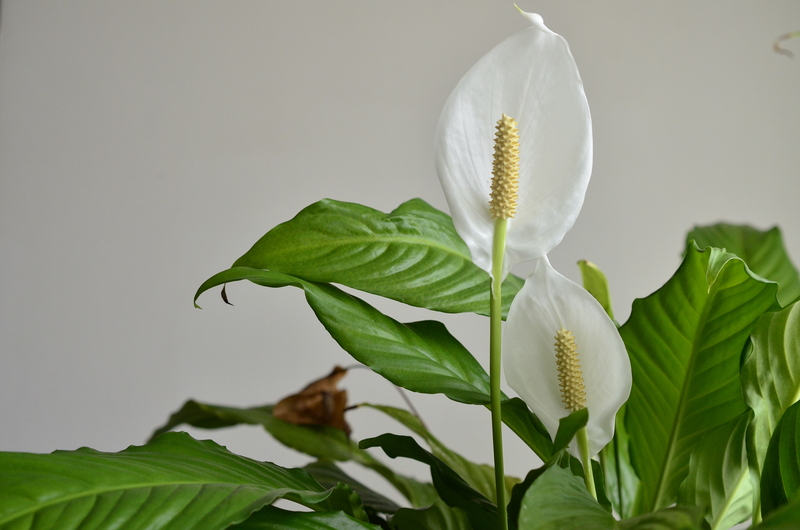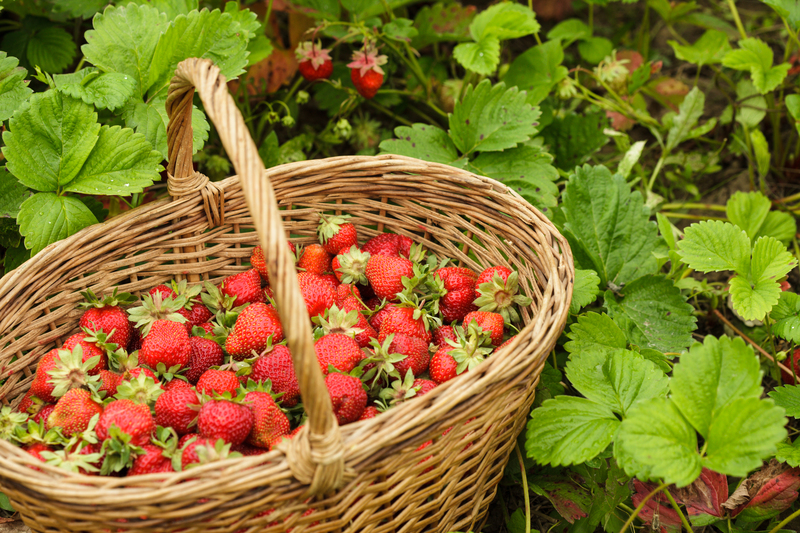Winter Proofing Tips for Garden Plants
Posted on 08/06/2025
Winter Proofing Tips for Garden Plants: The Ultimate Guide to Protecting Your Greenery
When the temperature drops and frost glazes your garden, it's time to take action and shield your beloved plants from the harsh bite of winter. This comprehensive guide on winter proofing garden plants offers essential strategies to keep your flora healthy and vibrant until spring. Discover innovative tips and cold-weather gardening solutions that, when put to use, can mean the difference between a garden that thrives or one that succumbs to winter's chill.

Why Is Winter Protection Necessary for Garden Plants?
While some plants are naturally equipped to survive cold weather, many popular garden varieties--including perennials, shrubs, and certain bulbs--are vulnerable to frost damage, dehydrating winds, and temperature fluctuations. Protecting your plants using effective winter proofing for plants techniques ensures:
- Survival through harsh conditions
- Vigorous, healthy regrowth in spring
- Protection from unexpected cold snaps or late frosts
Understanding the Needs of Your Garden Plants in Winter
Every garden is unique, and so are the needs of your plants. Some may require just a bit of mulch, while others need thorough insulation. Factors to consider include:
- Plant species and hardiness zones
- Soil conditions and moisture levels
- Exposure to wind, sun, and precipitation
- Recent transplants or young plants
Identifying Vulnerable Plant Types
Pay special attention to:
- Tender perennials (e.g., dahlias, cannas)
- Non-native shrubs and trees
- Potted or container-grown plants
- Newly planted or young shrubs
10 Effective Winter Proofing Gardening Techniques
1. Mulching for Insulation
Mulch acts as a protective blanket for your soil and roots. Apply a thick layer (2-4 inches) of organic mulch, such as straw, bark chips, or shredded leaves, around the base of your plants. This helps to:
- Regulate soil temperature
- Retain soil moisture
- Prevent heaving (roots rising and becoming exposed)
Tip: Avoid piling mulch directly against stems or trunks to reduce the risk of rot.
2. Watering Before Winter Sets In
Dehydration is a leading cause of winter plant loss. Before the ground freezes, give your plants a deep watering. Moist soil retains heat better than dry soil and helps roots survive cold periods. For evergreen plants, maintain soil moisture as long as possible.
3. Wrapping and Covering Delicate Plants
To shield your most vulnerable shrubs or trees from winter winds and frost:
- Use burlap, horticultural fleece, or old sheets to wrap plants, loosely securing them with string.
- For small plants, use cloches (plastic or glass domes) or make your own from cut plastic bottles.
- Erect windbreaks around sensitive plants using stakes and breathable fabric.
Remember to remove covers during mild spells to allow in air and light.
4. Relocating and Insulating Container Plants
Container plants are more susceptible to the cold because their roots are above ground. Protect them by:
- Moving pots close to the house for warmth and shelter.
- Grouping pots together for mutual insulation.
- Wrapping pots in bubble wrap, burlap, or blankets.
- Setting containers on boards or pot feet to lift them off frozen ground.
5. Pruning for Increased Hardiness
Pruning can help reduce winter damage but must be done at the right time:
- Remove dead, diseased, or damaged branches to prevent snow and ice accumulation from snapping limbs.
- Avoid heavy pruning in late autumn; it can stimulate tender new growth vulnerable to frost.
6. Winterizing Roses, Evergreens, and Perennials
- For roses, mound soil around the base up to 12 inches and cover with mulch or pine boughs.
- Shield evergreens with burlap if exposed to drying winter winds.
- Cut perennial stalks back to several inches above ground and apply mulch.
7. Applying Anti-Desiccant Sprays
Desiccation, or drying out, is a substantial threat to broadleaf evergreens. Spraying with anti-desiccant products can help leaves retain moisture when the ground is frozen. Always follow directions and apply in dry, mild conditions.
8. Creating Microclimates in Your Garden
You can use strategic landscaping and structures to create warmer zones where sensitive plants will fare better:
- Plant near sunny south-facing walls to capture and reflect heat.
- Use fences, hedges, or temporary screens to block wind and micro-manage temperatures.
- Choose raised beds, which drain better and warm up more quickly in spring.
9. Digging Up and Storing Tender Bulbs
Some bulbs and tubers, like dahlias, gladiolus, and cannas, are not frost hardy. Dig them up after the first light frost, brush off soil, and store them in a cool, dry, dark place (such as a basement or garage), layered in peat moss or newspaper.
10. Monitoring for Pests and Diseases
Cold weather doesn't eliminate all pests. Slugs, rodents, and some fungi remain active. Check for burrowing animals, chewed stems, or signs of fungal growth and act promptly. Clean up fallen leaves and debris to remove overwintering sites for diseases.
Common Questions: Winter Proofing for Garden Plants
When should I start preparing my garden for winter?
Start your winter preparation in late fall, before the first frost. Watch your local weather forecasts and be ready to implement your winterizing strategies as soon as nighttime temperatures regularly dip below 40?F (4?C).
Is it better to leave dead plant material in the garden for winter?
Leaving certain plant materials, such as ornamental grass stalks or seedheads, can provide habitat for wildlife and protect crowns. However, you should remove any diseased or pest-infested material to prevent spreading problems in spring.
What is the best mulch for winter plant protection?
Straw, shredded leaves, pine needles, bark chips, and compost are all excellent choices. Avoid using materials that mat down and cause rot, such as whole leaves or grass clippings in thick layers.
How do I winterize raised beds?
- Add a thick layer of mulch to insulate the soil and protect perennial roots.
- Cover beds with row covers or low tunnels for additional insulation.
Advanced Winter Garden Protection Tips
Utilizing Cold Frames and Row Covers
Cold frames and row covers--clear or woven materials stretched over hoops--allow you to continue growing cold-hardy vegetables and shield sensitive plants from snow load. These structures trap heat, reduce wind exposure, and can be easily vented on milder days.
Heating Solutions for Extreme Conditions
In areas with severe winters, gardeners sometimes use:
- Soil-warming cables or heating mats for prized tropical plants.
- Fabric plant jackets infused with insulation.
- Heating lamps for greenhouses or covered patios (use with caution and always follow safety guidelines).

Planning for Year-Round Garden Success
The best winter garden protection starts long before the first frost. Choose plants suited for your growing zone, build up healthy soil through composting and mulching, and continually monitor the health of your garden. By winter-proofing your plants and beds now, you'll enjoy lush, resilient growth come spring.
Get Ready for Spring: Post-Winter Care
- Gradually remove winter coverings as temperatures warm up.
- Pull back mulches once risk of frost has passed to allow the soil to warm.
- Inspect plants for winter damage and prune as needed for healthy new growth.
- Fertilize and water to jump-start spring recovery.
Conclusion: Embrace the Cold, Protect Your Garden
Winter doesn't have to mean the end of your garden's beauty. With careful planning and the right winter proofing tips for garden plants, you can rest assured that your landscape will emerge from the snow healthy and strong. Implement these simple yet powerful steps to winterize your plants, safeguard their roots, and set the stage for a lush, thriving garden in the coming year.
Ready to start winter proofing your plants? Take action today to protect your investment, and let the cold months become just another chapter in your garden's ongoing success story.

